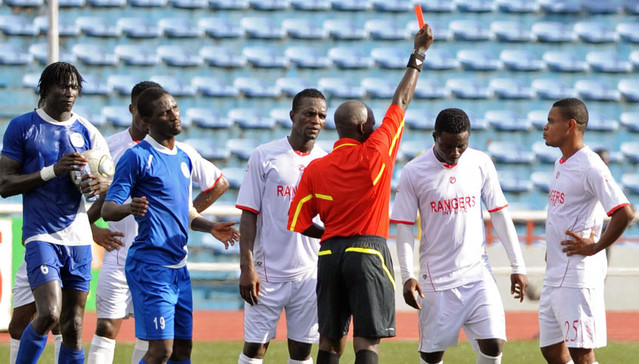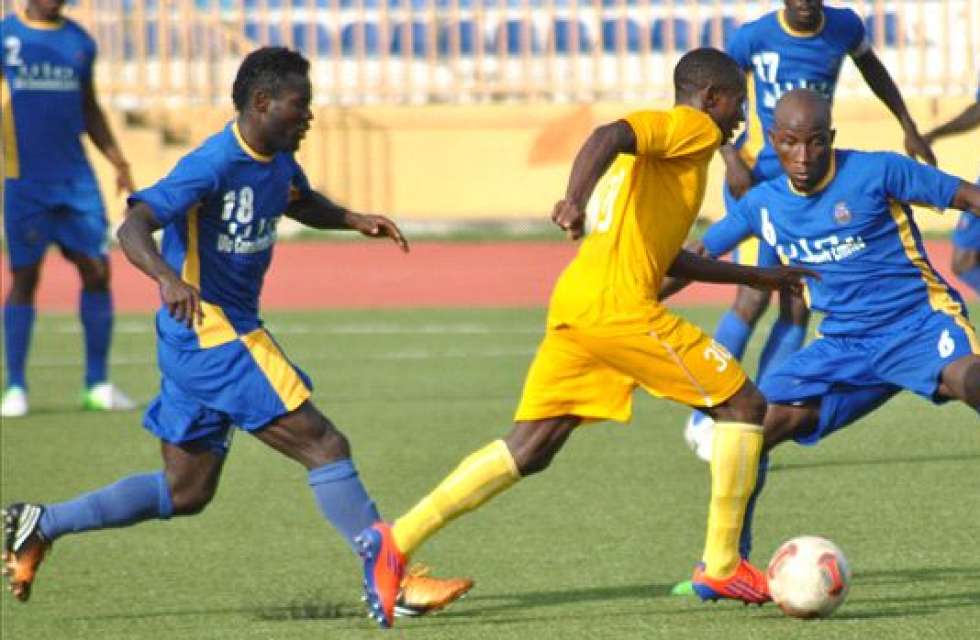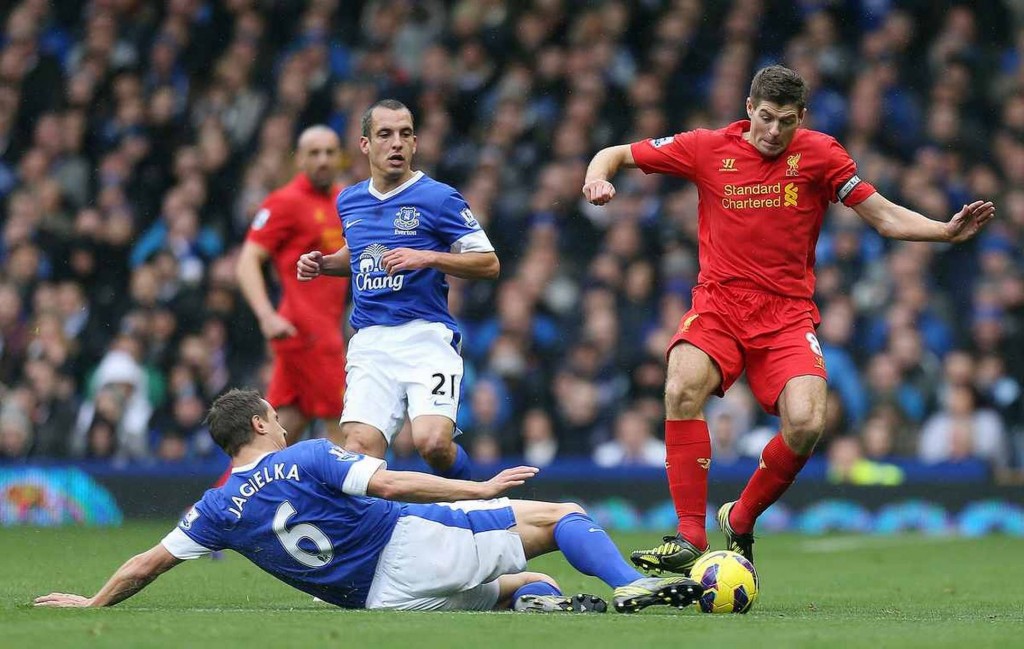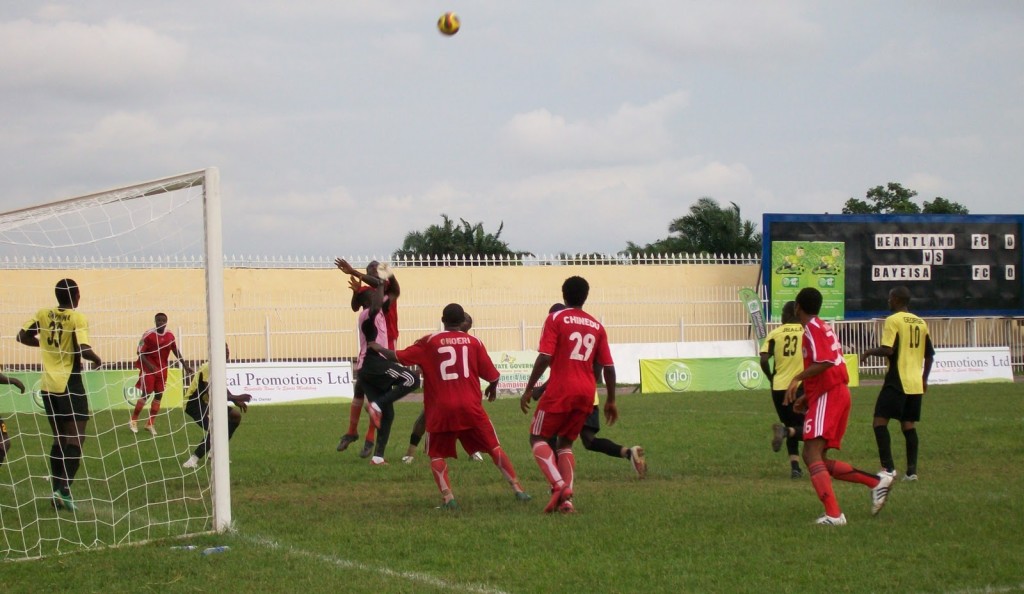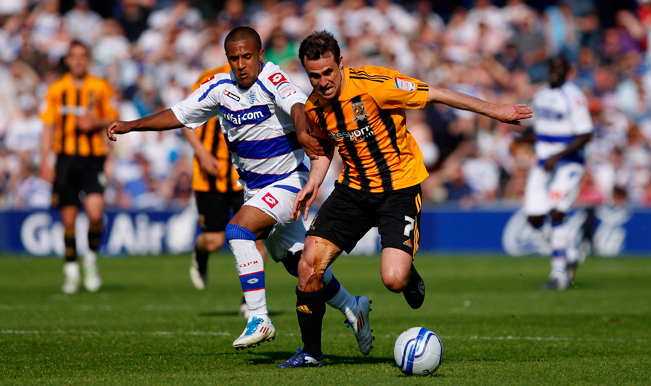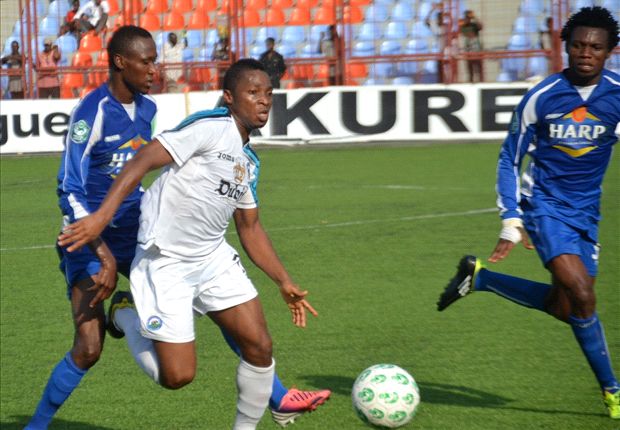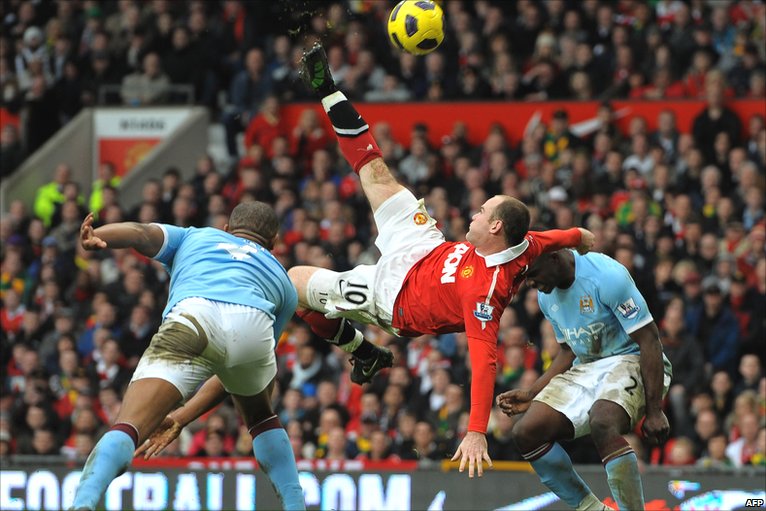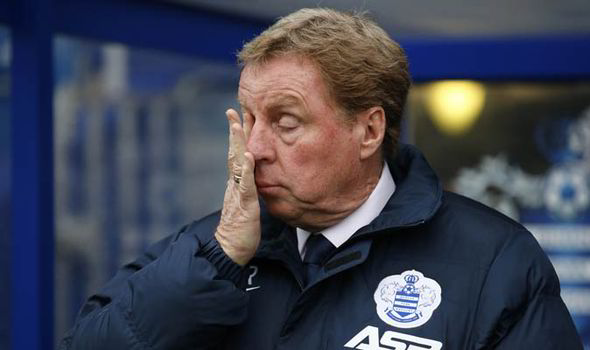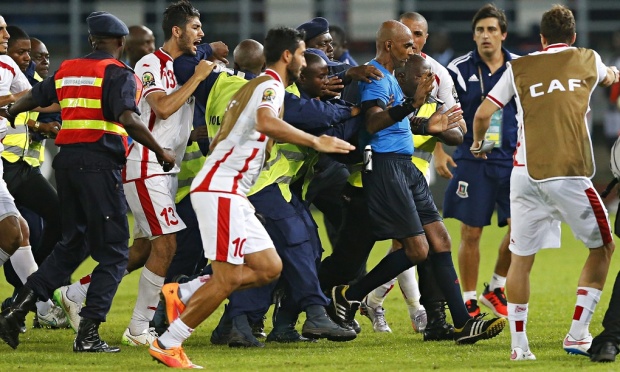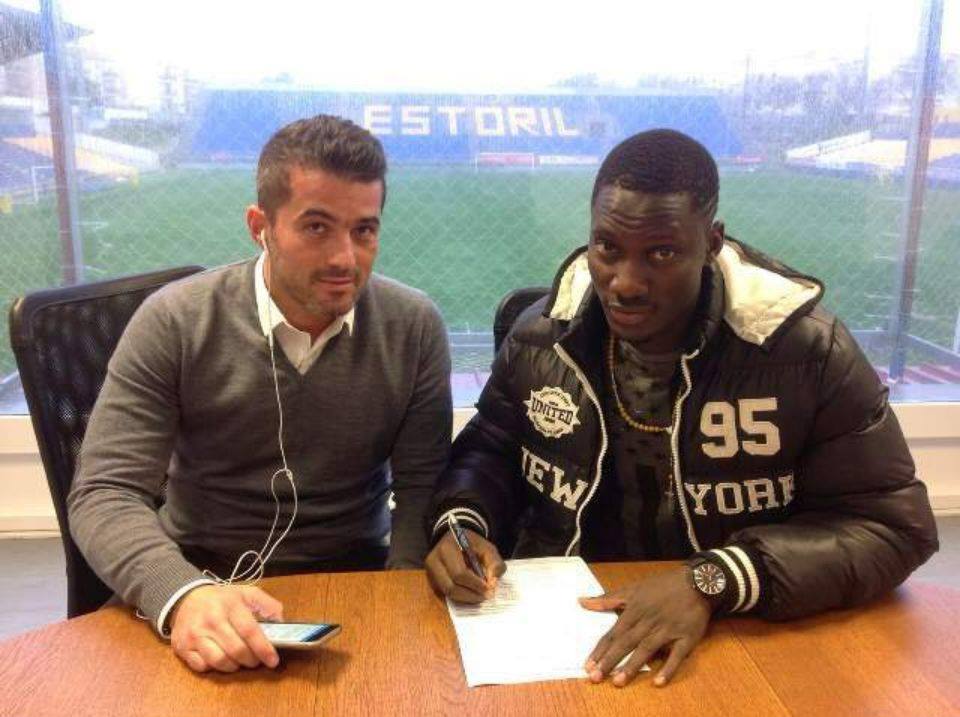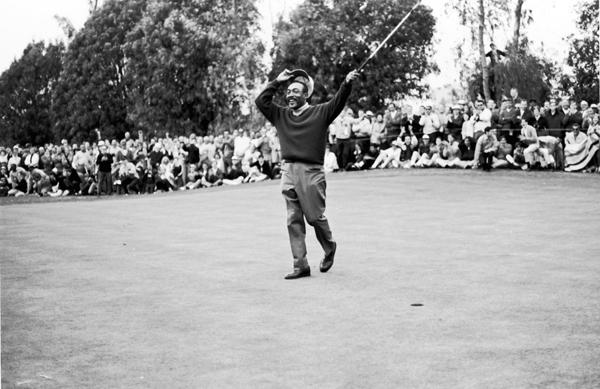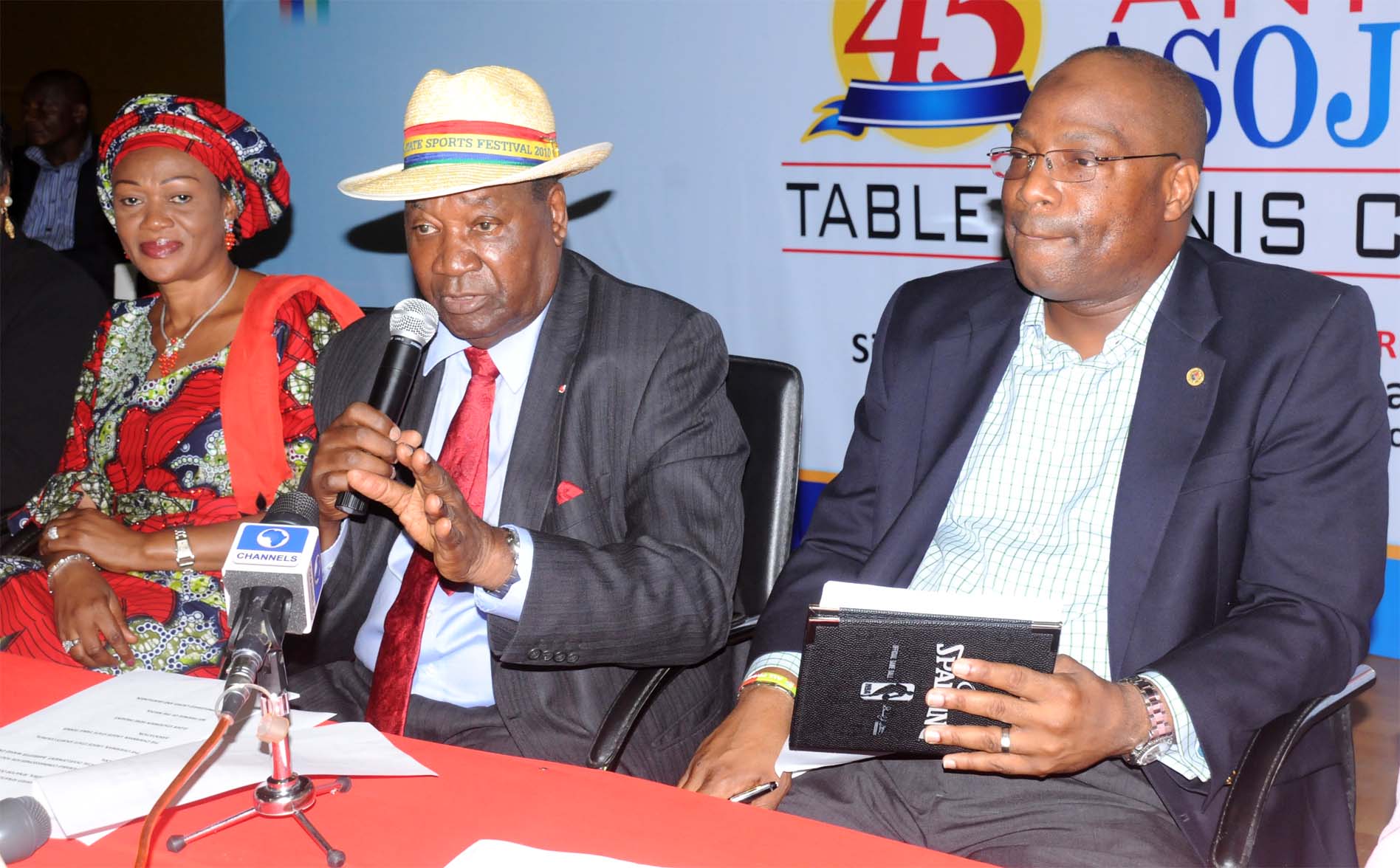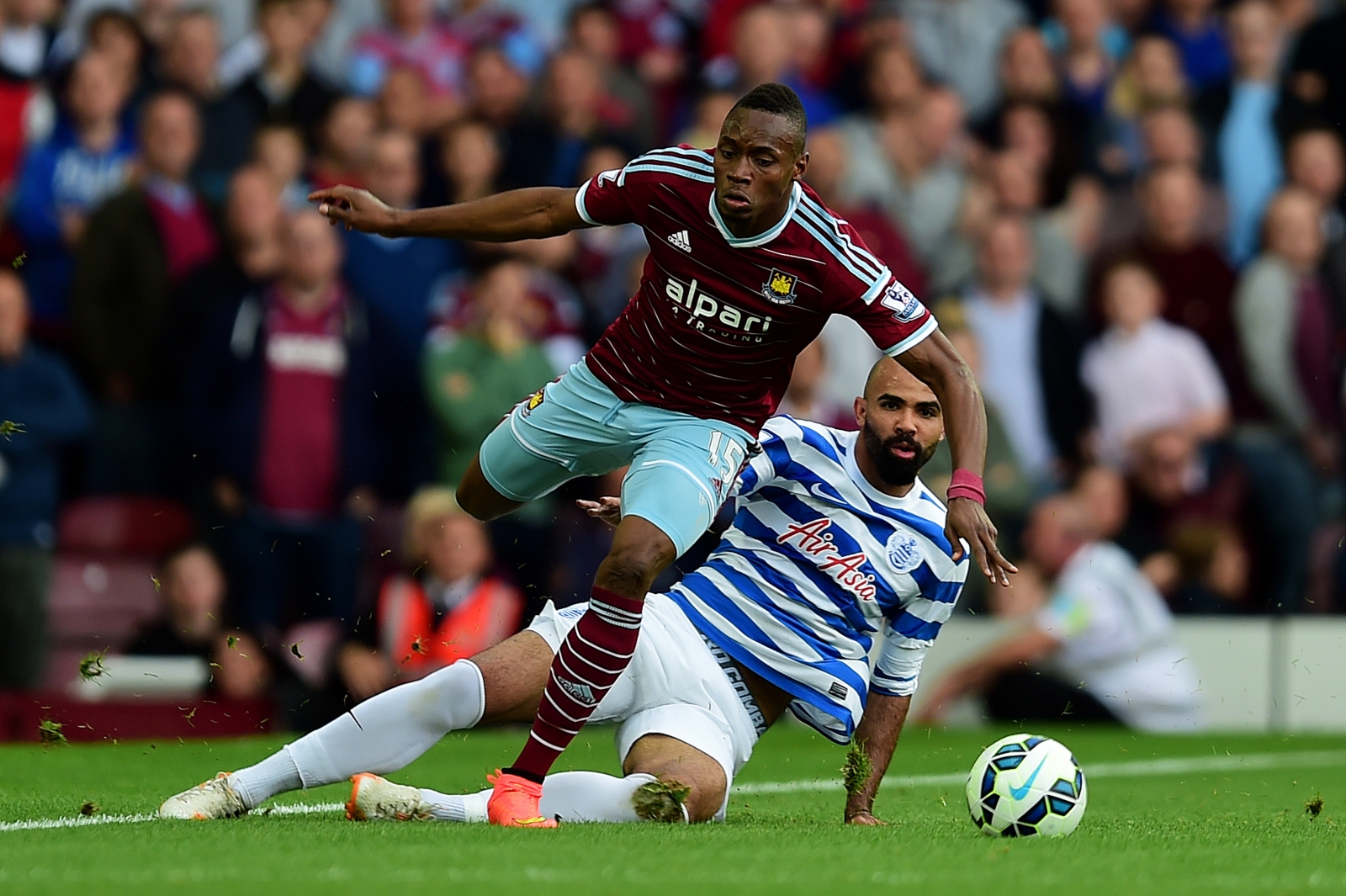Economics is a great subject.
I love the subject, not because I’m an Economist. I love it because of ceteris paribus!
Yes, ceteris paribus a Latin phrase meaning “with other things the same” or “all other things being equal or held constant”.
So, when in doubt, and in need of a clear and focused mind, “hold other things constant” like you often hear motivational speakers telling you to focus on one thing at a time. They stole it from Economics – a great subject indeed!
Advertisement
Nduka Irabor, chairman of the League Management Company (LMC) held other things like quality of the league and players constant and said that the media is under reporting the Nigeria Professional Football League (NPFL).
It might not be the solution to dwindling stadium attendances in the league but ceteris paribus, the LMC boss is right!
A recent research titled: A Comparative Analysis of the Coverage of Nigerian Professional Football League and English Premier League by The Guardian and The Punch Newspapers, even backs his claim.
Advertisement
Without sounding too academic (aka boring), here is a summary of the dissertation carried out by one Victor Akhidenor (yeah right, that’s me) in 2013 for the award of Master degree in Media and Communication from Pan-Atlantic University.
Statement of the Problem
This research assesses the content of the media coverage of the NPFL in comparison with the EPL (English Premier League). It investigates the level of prominence and direction given to both leagues by the two selected newspapers.
Advertisement
Objective of Study
1) To examine the media coverage of the NPFL in relation to their coverage of the EPL.
2) To establish if prominence is given to the coverage of the EPL than the NPFL.
Significance of the Study
Advertisement
This study is of significance because the findings of this research will provide insightful information on the coverage of the NPFL and the EPL by the media.
This knowledge determines if the media coverage of the NPFL is responsible for the lack of interest in the league by football fans, or if other factors like quality of players and football, match schedules and cost of viewing, stadium facilities and fans’ behaviour in the stadium, quality of commentary, and technology enhanced production are responsible.
Advertisement
This study will contribute to public knowledge.
Research Questions
Advertisement
1) What is the level of reports given by the newspapers in relation to both leagues?
2) Is the level of prominence attached by the selected newspapers in reporting the leagues influenced by the pages on which stories appeared?
Advertisement
Population
It refers to the entire population in a particular research work. The population of this study consists of all national newspapers in Nigeria.
Sample Size
According to Wang (2006) the goal of sampling is to generate a manageable subset of data from a large population or a sampling frame to represent this population. An ideal sample is a tradeoff between the ease for study and the representativeness of the population. Thus, content analysts should determine how to define a tangible sampling frame, how to draw a representative sample from the sampling frame, and how large the sample size must be to be not only effective but also efficient. Thus, two newspapers The Guardian and The Punch were chosen because of their existence since 1984 to date, readership, appeal, consistency in sports coverage, availability, convenience, and easy access to archival materials. The researcher analysed nine months editions (two months in each year) of the two newspapers from March to April, 1984, 1994, 2004, and 2013. Those months and years were considered based on the emergence of Multichoice/DSTV into the Nigerian market in 1994. So, the researcher wants to know the level of coverage of the NPFL and the EPL ten years before (1984), the year of its emergence (1994), ten years after (2004) and the present situation (2013). The Guardian and The Punch newspapers existed and still exist in the period of consideration.
Units of Analysis
The unit of analysis refers to the basic unit of text to be classified during content analysis. In this context, the units of analysis are those indices that will be used to collect date from the newspapers. In this study, it comprises news stories, feature articles, opinions, editorials and pictures. The contents will be tested for the direction of the news frequency and placement of the stories in the newspapers. The frequency will be determined by the quantity of reports on the NPFL and the EPL while the direction will be determined by the stand of the newspapers as it reflects the issues reported.
Prominence which is measured by frequency of reporting, day of week, page of item, location on page, headline size, text size, analysis of photograph, will be determined by the placement of each item on the NPFL and the EPL. The front page is regarded as the most important with the back page in second position while those in inside pages are least in importance. The prominence should give a clear indication whether reporting both leagues is influenced by other factors aside mere coverage of the leagues.
Data Presentation, Analysis and Discussion
This study’s aim was to find out the prominence given to the coverage of the NPFL and the EPL by two national newspapers, The Guardian and The Punch. The news content, which was divided into different categories, was sampled to achieve the purpose of the research.
A total number of four hundred and eighty eight (488) editions were analysed from the month of March and April 1984, 1994, 2004, and 2013. Eventually, one thousand five hundred and six (1,506) articles were found on the NPFL and the EPL.
Distribution of articles on the NPFL and EPL according to Prominence
The Guardian
In 1984, of the 49 stories on the NPFL, the front page of the sports pages had 100% coverage. The inside and back pages had no coverage. In four stories on the EPL the front page had 100% coverage. The inside and back pages had no coverage.
In 1994, of the 36 stories on the NPFL, the front page had 52% coverage; the back page 48% while the inside page was nil. The three stories on the EPL had 100% coverage in the back page.
In 2004, of the 217 stories on the NPFL, the front page of the sports pages had 45% coverage; the back page 7%; and the inside page 48%. In the 140 stories on the EPL, the front page had 36% coverage; the back page 6% while the inside page had 57%.
In 2013, of the 87 stories on the NPFL, the front page had 32%; the back page 12%; and the inside page 56%. In the 222 stories on the EPL, the front page had 14%; the back page 15%; and the inside page 71%.
The Punch
In 1984, of the 49 articles on the NPFL, the front page of the sports pages had 100% coverage. The inside and back pages had no coverage. The EPL had no coverage for the front page, the inside and back pages.
In 1994, of the 177 stories on the NPFL, the front page had 70% coverage; the back page 25% while the inside page had 9%. The single story on the EPL had 100% coverage in the back page.
In 2004, of the 137 articles on the NPFL, the front page of the sports pages had 14% coverage; the back page 2%; and the inside page 84%. In the 95 stories on the EPL, the front page had 22% coverage; the back page 3% while the inside page had 75%.
In 2013, of the 71 articles on the NPFL, the front page had 14%; the back page 30%; and the inside page 56%. In the 218 stories on the EPL, the front page had 20%; the back page 18%; and the inside page 62%.
Distribution of articles on the NPFL and EPL according to News Categories
The Guardian
In 1984, of the 49 articles on the NPFL, news stories had 51% coverage, pictures had 25%; features had 14%; and opinions had 10%. In four stories on the EPL, features had 100% coverage. There were no news stories, pictures, and opinions.
In 1994, of the 36 articles on the NPFL, news stories had 72% and pictures had 28%. Features and opinions had zero percentage. Of the three stories on the EPL, news stories had 100%.
In 2004, of the 217 articles on the NPFL, news stories had 67%, pictures had 30%; features had 3%; opinions had zero percentage. In the 140 stories on the EPL, news stories had 64%; pictures had 28%; features had 8%; and opinions had zero percentage.
In 2013, of the 87 articles on the NPFL, news stories had 57%; pictures had 38%; features had5%; and opinions had zero percentage. In the 222 stories on the EPL, news stories had 65%; pictures had 34%; features had 1%; and opinions had zero percentage.
The Punch
In 1984, of the 49 articles on the NPFL, news stories had 53% coverage; pictures had 43%; features had 0%; and opinions had 4%. There was no story on the EPL in the period covered.
In 1994, of the 177 articles on the NPFL, news stories had 71%; pictures had 28%; features Had 0%; and opinions had 1%. News stories had 100% in the single story on the EPL.
In 2004, of the 137 articles on the NPFL, news stories had 74%; pictures had 24%; features had 0%; opinions had 2%. In the 95 stories on the EPL, news stories had 70%; pictures had 27%; features had 3%; and opinions had zero percentage.
In 2013, of the 71 articles on the NPFL, news stories had 76%; pictures had 10%; features had 1%; and opinions had 13%. In the 218 stories on the EPL, news stories had 61%; pictures had 38%; features had 0.5%; and opinions had 0.5%.
Distribution of stories on the NPFL and EPL according to Headline Display
The Guardian
In 1984, of the 37 stories on the NPFL, 32% had banner headlines while 68% had other headlines. Other headlines had 100% of the four stories on the EPL.
In 1994, of the 26 stories on the NPFL, 27% had banner headlines while 73% had other headlines. Other headlines had 100% of the three stories on the EPL.
In 2004, of the 153 stories on the NPFL, 31% had banner headlines while 69% had other headlines. In 101 stories on the EPL, 31% had banner other while 69% had other headlines.
In 2013, of the 54 stories on the NPFL, 39% had banner headlines while 61% had other headlines. In 147 stories on the EPL, 31% had banner other while 69% had other headlines.
The Punch
In 1984, of the 28 stories on the NPFL, 32% had banner headlines while 68% had other headlines. There was no story on the EPL.
In 1994, of the 127 stories on the NPFL, 25% had banner headlines while 75% had other headlines. Other headlines had 100% of the single story on the EPL.
In 2004, of the 104 stories on the NPFL, 25% had banner headlines while 75% had other headlines. In 69 stories on the EPL, 41% had other banners while 59% had other headlines.
In 2013, of the 64 stories on the NPFL, 28% had banner headlines while 72% had other headlines. In 135 stories on the EPL, 13% had other banners while 87% had other headlines.
Distribution of stories on the NPFL and EPL according to Length of Lines of stories
The Guardian
In 1984, of the 37 stories on the NPFL, 0-49 lines had 52%; 50-99 lines had 24%; 100 and above lines had 24%. In the four stories on the EPL, 0-49 lines had 100%.
In 1994, of the 26 stories on the NPFL, 0-49 lines had 46%; 50-99 lines had 50%; 100 and above lines had 4%. In the three stories on the EPL, 0-49 lines had 100%.
In 2004, of the 153 stories on the NPFL, 0-49 lines had 12%; 50-99 lines had 59%; 100 and above lines had 29%. Of the 101 stories on the EPL, 0-49 lines had 22%; 50-99 lines had 54%; 100 and above lines had 24%.
In 2013, of the 54 stories on the NPFL, 0-49 lines had 19%; 50-99 lines had 63%; 100 and above lines had 18%. Of the 147 stories on the EPL, 0-49 lines had 24%; 50-99 lines had 69%; 100 and above lines had 7%.
The Punch
In 1984, of the 28 stories on the NPFL, 0-49 lines had 25%; 50-99 lines had 57%; 100 and above lines had 18%. The EPL had no coverage.
In 1994, of the 127 stories on the NPFL, 0-49 lines had 68%; 50-99 lines had 31%; 100 and above lines had 1%. In the single story on the EPL, 0-49 lines had 100%.
In 2004, of the 104 stories on the NPFL, 0-49 lines had 23%; 50-99 lines had 71%; 100 and above lines had 6%. Of the 69 stories on the EPL, 0-49 lines had 24%; 50-99 lines had 64%; 100 and above lines had 12%.
In 2013, of the 64 stories on the NPFL, 0-49 lines had 59%; 50-99 lines had 33%; 100 and above lines had 8%. Of the 135 stories on the EPL, 0-49 lines had 73%; 50-99 lines had 27%; 100 and above lines had 0%.
Analysis of Results
This study aimed at analysing the content of two Nigerian newspapers and their coverage of the NPFL and the EPL. The goal was to find out how The Guardian and The Punch newspapers covered the two leagues in March and April 1984, 1994, 2004, and 2013.
Research Question 1: What is the quantity level of reports given by the newspapers in relation to the two leagues?
Of the 488 newspapers sampled, The Guardian had 389 stories on the NPFL and 369 on the EPL, 51% and 49% respectively. The Punch had 434 stories on the NPFL and 314 on the EPL, 58% and 42% respectively. In total, both papers had 823 NPFL stories and 683 EPL stories representing 55% and 45% respectively.
Research Question 2: Is the level of prominence attached by the selected newspapers in reporting the leagues influenced by the pages on which stories appeared?
To determine this, the researcher classified the importance of the stories according to the page they appeared. It was implied that front page stories are the most important in cognizance with the explanation by Reisner (1992) as cited in Umuerri (2006). The back page came next while stories in the inside pages being the least important.
Of the 389 stories on the NPFL, 145 appeared on the front page, 43 on the back page and 201 on the inside page. In 369 stories on the EPL; 81 appeared on the front page; 45 on theback page and 243 on the inside page.
Of 434 stories on the NPFL, 202 appeared on the front page; 68 on the back page; and 164 on the inside page. In 314 stories on the EPL, 64 appeared on the front page; 44 on the back page; and 206 on the inside page.
Based on this data, it is obvious the prominence given to stories on the NPFL is more than those given to the EPL. Both papers had 347 front page coverage on the NPFL as against 145 on the EPL. The back page which is regarded as the second most important page had 111 for the NPFL and 89 for the EPL. The least most important page, the inside page, had 365 from the NPFL and 449 for the EPL.
Discussion of findings
The first research question sought to find out the quantity level of report on the NPFL and the EPL. From the research, it was discovered that the two newspapers covered both leagues to a large extent. To make the research clear and lucid, certain content categories were used – news stories, pictures, features and opinions.
In The Guardian, news articles on the NPFL (247) were more than the EPL (238). It was the same with pictures on the NPFL (119) and the EPL (114). Feature stories had 18 for the NPFL and 17 for the EPL. Opinions had five and nil for the NPFL and EPL respectively.
In The Punch, news articles on the NPFL (307) were more than those on the EPL (200). The same with pictures on the NPFL (111) and the EPL (109). Features on the EPL (4) were more than those on the NPFL (1) but opinions on the NPFL (15) surpassed those on the EPL (1).
The second research question sought to find out the prominence attached by the newspapers in reporting the NPFL and the EPL.
In The Guardian, most of the news articles on the NPFL (201) and EPL (243) appeared on the inside page as against the front page which is regarded as the most important.
In The Punch though, the front page had more stories on the NPFL (202) while the inside page had more stories on the EPL (206).
The fact that most of the news articles appeared either in the front page or the inside page indicate the level of importance the papers attached to the NPFL and the EPL.
In conclusion, both papers’ coverage showed effort to fulfill the obligation of informing the readers on the events happening in both leagues. Even though the coverage of the NPFL increased at a decreasing rate compared to the coverage of the EPL which had a steady increase both papers reported the two leagues with fairness, objectivity, and balance.
Conclusion and Recommendation
Summary
This study compared the coverage of the NPFL and the EPL and The Guardian and The Punch were used for this purpose. The two papers were sampled because they were in existence in 1984 and still exist to date and also for their wide coverage being national newspapers. The two objectives of the research were to examine the coverage of the NPFL in relation to the EPL and to establish if there is a preference in the coverage of the EPL over the NPFL.
Four news categories were used to analyse the data – news stories, pictures, features and opinions.
These four categories were used to search for the frequency of coverage and the prominence given to the stories covered.
Below are the summary of the findings
- The study revealed that The Guardian had 389 editorial matters on the NPFL of which 247 were news stories, 119 were pictures, 18 were features and five were opinions. For the EPL, it had 369 editorial matters of which 238 were news stories, 114 were pictures, 17 were features with opinion having zero result.
- The Punch had 434 editorial matters of which 307 were news stories, 111 were pictures, 1 was a feature story, and 15 were opinions all on the NPFL. The EPL on the other hand had 314 editorial matters of which 200 were news stories, 109 were pictures, 4 were features and a single opinion story. Both papers gave more coverage to the NPFL (see Table 9 and charts 4:1.9 and 4.1.10) than the EPL.
The theoretical framework for this research was drawn from Wright’s Functional Theory of Mass Communication and Status Conferral Theory.
Wright (1960) asks:
“What are the consequences – for the individual, subgroups, social and cultural systems – of a form of communication that addresses itself to large, heterogeneous, anonymous audiences publicly and rapidly, utilizing a complex and expensive formal organization for this purpose” (Allen, 1980).
Based on this theory, the four functions of mass communication or kinds of communication activities are:
i. surveillance of the environment (or news activity);
ii. interpretation of the event surveyed and prescription for reactions to them
iii. the transmission of social values and other elements of culture to the new members of the society, young or old,
iv. human amusement or entertainment (Wright, 1974).
Thus, based on this theoretical framework, mass communication (newspapers’ content) on the NPFL and the EPL is for the purposes posited above.
Allen (1980) explains that status conferral occurs when an individual’s or group’s status is increased simply because of mass media’s coverage. This explanation is based on the observation/perception, which Lazersfeld and Merton point out that “recognition by the press or radio or magazines or newsreels testifies that one has arrived, that ones’ behaviour and opinions are significant enough to require public notice”. If that is the case, then the coverage of the NPFL and the EPL by the media could be a determinant of their significance.
The content of these newspapers (over 80% European League) is disturbing because the development leaves Nigeria “without proportionate reciprocation of influence”. Except something is done to reverse the trend, time will come when more sport lovers in Nigeria will be drawn to these papers thereby making Nigeria subside to the media products of these European nations.
The emergence of football club newspapers can be said to be a response to a need not met by the existing media. The fact that some of these papers have continued in business for about two years, even with their poor editorial and production qualities is evidence that there is demand for them. Demand, on the other hand, is evidence of continued gratification derived by the readers. It must be noted also that the gratification goes beyond newspaper output but borders on the quality of football played in the country. Notwithstanding, the emergence of these newspapers surely signifies the beginning of a new culture of media imperialism which is already drawing fans away from the local league thereby making the local league all the more unviable.
Recommendations
Consequent to the findings of this research, some recommendations will be made. They are as follows:
- The media should increase their coverage of the NPFL. The research showed a decreasing trend from 1984 to 2013 in the coverage of the NPFL compared to the EPL which maintained an increasing trend. Arm chair reporting of the EPL from the internet has overshadowed the itinerant coverage of the NPFL.
- The media should help promote, project and re-position the Nigerian domestic league.
- The media should serve as a forum for the exchange of comments, opinions, and criticism on both leagues. The research showed a dearth in opinions and features on both leagues.
- The media should engage in editorial writings on sports in the sports pages. The research showed a dearth in this kind of reporting.
- The media should provide entertainment on both leagues with the use of cartoons, jokes, and anecdotes which add excitement to the coverage. The research showed a dearth in this kind of reporting.
Other recommendation(s)
The researcher recommends that new research into this area can look at and identity factors that influence the choice of stories by the print media on the EPL ahead of stories on NPFL. The readers’ view in choosing news and stories on the EPL ahead of the ones on the NPFL can also be analysed.
Globacom as the title sponsor of the NPFL should empower reporters to cover the league across the country.
A promo on the NPFL for fans should be organised to help galvanise interest in the league.
So, ceteris paribus, the media is guilty as charged by the LMC boss!
On this “academic” note, I begin my opinion on sports which I hope will be a weekly or twice in a week offering.
Yes, ceteris paribus!
